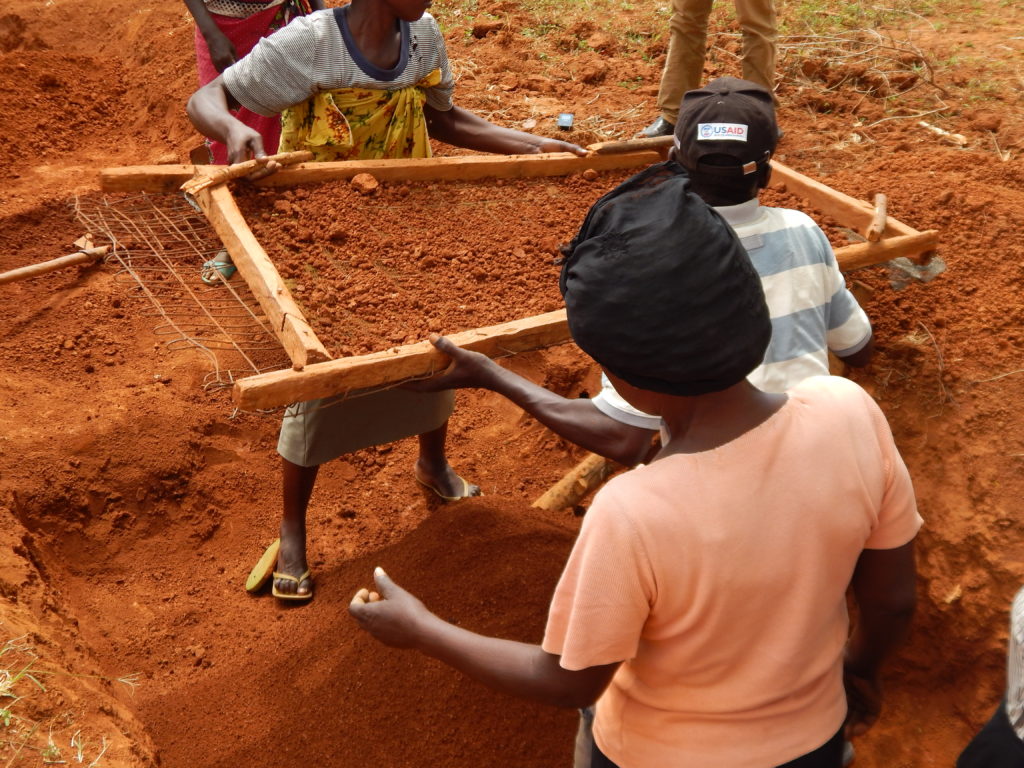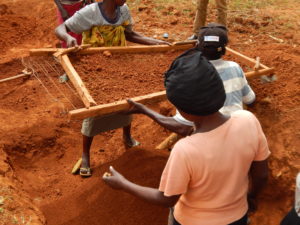Busia sacco gives loans for toilets

Members of the Luchululu Community Unit in Samia Subcounty make interlocking bricks used in constructing durable toilets.
Busia sacco gives loans for toilets
By Lilian Kaivilu
@liliankaivilu
When Busia was declared Open Defacation Free (ODF) in November 2015, many thought that the county had reached its target in sanitation. But far from it, the residents are now going beyond having just a toilet to constructing decent and longer lasting toilet facilities.
For an area to be declared ODF, it has to have a 100 percent absence of human waste in open spaces, a handwashing facility close by every latrine and latrines constructed with durable local
materials. Nambale was the first sub county in Busia, and in Kenya to be declared ODF in November 2011.

Besides having decent toilets, residents are constructing toilets with hand washing facilities to avert cases of cholera and diarrhea. Ambrose Fwamba, Busia County Public Health Officer says adoption of modern toilets will go a long way in reducing disease burden in the area. On average, it costs Sh5,000 to treat diarrhea in a child. This excludes the school days lost by the child as well as working time lost by parents in attending to the sick child.
This means that if a family of three children lacks a toilet and consequently contacts diarrhea, the family would spend about Sh15000 in hospital bill to treat the children. This is the same as digging a single-door toilet in the homestead. In case the child suffers cholera, the county health office estimates that it will cost the family at least Sh12,000 to treat the disease in one child. This equals Sh36,000 in the three children.
In an initiative led by community health workers, Busia county has now adopted a model that allows locals to contruct modest, durable toilet facilities through a loan facilities. The loans programme is implemented by Finish Ink, public private partnership project funded by the Dutch Government through the Netherlands Enterprise Agency.

Through a partnership, Kenya’s Ministry of Health, Amref Health Africa in Kenya and Netherlands, KREP bank, Family Bank, WASTE, SNS Asset Management Company, Goodwell Investment and Social Equity Foundation among others have enabled the construction of 16,216 latrines in Busia and Kilifi counties. This, Fwamba says, has improved sanitation generally in the county.
Under the Finish Ink project, 16,216 latrines have been constructed, 1,129 youths in 21 youth groups trained on sanitation entrepreneurship and 31,000 women received financial literacy training.
According to Rogers Moraro, project assistant, Finish Ink in Busia county, two finance institutions have so far developed a sanitation loan portfolio. Through loans from such institutions, residents of Busia have received loans to construct decent toilet conveniently. “These are normal latrines but they last longer. The model eliminates bad smell through a pipe fixed on the outside instead of inside. The pipe is heated by the sun so the air inside is hot thus rises, giving a way for the bad smell,” explains Moraro. He adds that the toilet is constructed with a fly screen that captures flies. 
Austin Opuru Ekakoro is the manager of Bako Sacco in Teso North. The sacco is one of the finance institutions that have been used to advance loans to members who want to construct decent toilets in their homes. According to Ekakuro, the sacco has so far seen the construction of 18 toilets in the area. “In addition, we have partnered with Amref Health Africa to train 27 masons to carry out construction of the toilets specifically designed using interlocking bricks,” says Ekakuro.
The 267-member Bako Sacco takes assets such as furniture as security for the loans. So far, the saccco has disbursed Sh700,000 in loans since November 2016. Members pay a 10percent interest per year on reducing value. But die to demand, Ekakuro reveals that the sacco now has 30 pending applications for the sanitation loan.

